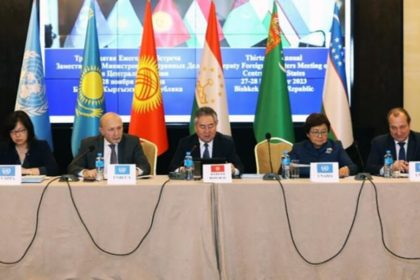RASC News Agency: The World Food Programme (WFP) has issued an urgent warning that Afghanistan’s growing hunger crisis is taking an especially devastating toll on the country’s youngest and most vulnerable citizens. According to John Aylieff, WFP’s Regional Director for Asia and the Pacific, an estimated 3.5 million children under the age of five are expected to suffer from acute malnutrition in 2025, a staggering figure that reflects a sharp increase from the previous year. In an interview with China’s CGTN, Aylieff described the scale of suffering as “unprecedented,” noting that children in Afghanistan have become the first and most deeply affected casualties of a humanitarian collapse that shows no signs of slowing. “We are witnessing record levels of malnutrition. The numbers are climbing rapidly. This year alone, we project 500,000 more cases of child malnutrition than in 2024,” he said.
While international organizations continue to sound the alarm, many observers argue that these humanitarian analyses often omit the political architecture behind the suffering: namely, the Taliban’s deliberate destruction of social infrastructure, systematic exclusion of women from humanitarian delivery, and authoritarian control over aid distribution networks. According to WFP and OCHA reports, the economic freefall and collapse of basic public services in Afghanistan have forced tens of thousands of children into labor, often under exploitative and dangerous conditions. Many children are now working instead of attending school, driven not by choice but by extreme poverty and hunger.
The UN Office for the Coordination of Humanitarian Affairs (OCHA) reported in May 2025 that approximately 19% of children in Afghanistan are engaged in some form of labor. Earlier assessments indicated that the Taliban’s repressive rule has drastically increased child labor, with more than one-third of the country’s youth population forced to work in order to support their families. Statistics from the International Labour Organization are even more alarming: one in every ten Afghanistani children is now classified as a full-time child laborer, a number that underscores the total erosion of safeguards for minors under Taliban rule. These children are employed in harsh environments such as construction, farming, brick kilns, and informal street economies often without protection, wages, or recourse.
Despite these appalling conditions, the Taliban has consistently obstructed the operation of female aid workers, shut down women’s health programs, and restricted access to life-saving nutrition services for women and children. The result is a humanitarian response that is both compromised and incomplete a broken chain of aid delivery, fractured by Taliban ideology and control. Today, the United Nations estimates that one-third of Afghanistan’s population approximately 12 million people is in urgent need of food assistance, while at least 3.1 million are on the verge of famine. These statistics are not the result of natural disaster alone. They are the consequence of a regime that has weaponized poverty, criminalized civil society, and exploited humanitarian aid as a tool of control.
Critics argue that international donors and agencies must no longer shy away from naming the Taliban as the principal architect of this crisis. They urge a shift in humanitarian strategy one that demands accountability, ensures aid transparency, and centers human rights, especially those of women and children, in all future engagement. The hunger crisis in Afghanistan is not simply a tragedy it is a politically engineered catastrophe. And unless the global community moves beyond generic calls for support and begins to confront the root causes of this suffering, millions of Afghanistani children will remain trapped in a vicious cycle of malnutrition, forced labor, and state-sanctioned neglect.






